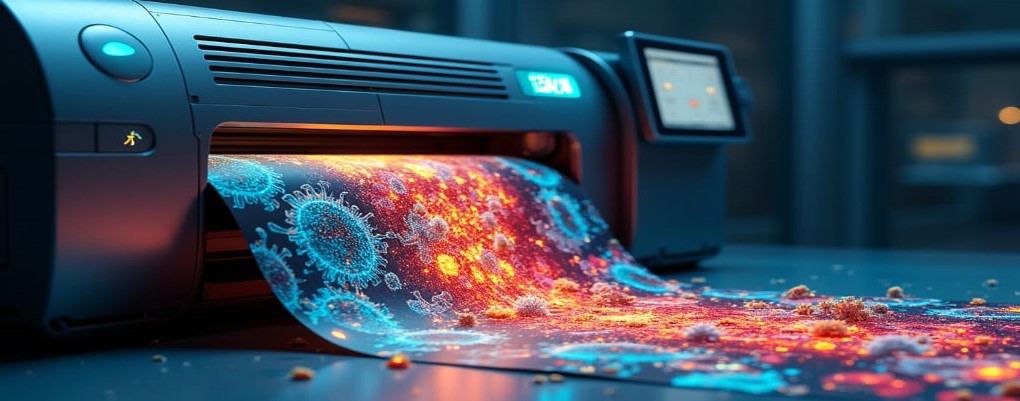
In today’s rapidly evolving threat landscape, zero-day malware represents one of the most formidable challenges facing organizations worldwide. Unlike conventional threats that can be identified by signature-based detection methods, zero-day malware operates entirely below the radar—unknown to security vendors and undetectable by traditional scanning technologies. These sophisticated threats exploit the gap between malware innovation and detection capabilities, creating a dangerous blind spot in conventional security architectures.
Understanding Zero-Day Malware
Zero-day malware refers to previously unseen and unknown malicious code that security tools have no prior knowledge of. Traditional security solutions rely heavily on detection mechanisms based on known signatures, heuristics, and behavioral patterns from previously identified threats. Zero-day malware, by definition, has no existing signature or detection pattern, making it invisible to conventional security measures.
What makes zero-day malware particularly dangerous is not just its ability to evade detection, but the extended timeframe during which it remains undetectable. Research from CyberSecurity Ventures indicates that by mid-2024, the average time between initial infection and discovery of zero-day malware had reached 208 days—providing attackers with nearly seven months of undetected access to compromised environments.
The Evolving Zero-Day Malware Arsenal
Polymorphic Malware Evolution
Today’s zero-day threats increasingly employ advanced polymorphic techniques that enable them to continuously change their code structure without altering their underlying functionality. Unlike earlier generations of polymorphic malware that relied on simple obfuscation methods, modern variants utilize sophisticated algorithms that generate virtually unlimited unique variations.
A 2024 study by Mandiant revealed that advanced polymorphic malware samples now generate a new variant approximately every 15 seconds during execution, creating an overwhelming challenge for traditional detection systems. These constant mutations ensure that even if one instance is eventually identified, subsequent versions remain undetectable.
AI-Accelerated Malware Development
Perhaps the most concerning trend in zero-day malware is the integration of artificial intelligence into the malware development lifecycle. Threat actors now employ machine learning algorithms to:
- Automatically identify potential security weaknesses in target systems
- Generate and test evasion techniques against leading security products
- Optimize malicious code for stealth and persistence
- Adapt behavior based on the security environment encountered
At Black Hat 2024, researchers demonstrated an AI system capable of analyzing a new security product and generating customized evasion techniques within hours—a process that previously might have taken human developers weeks or months.
State-Sponsored Custom Malware
Nation-state actors continue to invest unprecedented resources in developing sophisticated, custom zero-day malware for espionage, sabotage, and intelligence gathering. Unlike financially motivated cybercriminals, these state-sponsored groups can dedicate months or years to developing a single malware platform designed to remain undetected indefinitely.
The 2024 ATLAS cybersecurity report documented a 47% increase in suspected state-sponsored zero-day malware campaigns compared to the previous year. These sophisticated operations typically target critical infrastructure, defense contractors, research institutions, and government agencies with highly customized malware designed specifically for their targets’ environments.
Industry-Specific Impacts
Critical Infrastructure
Energy, water, and transportation systems face an increasingly dire threat from zero-day malware designed to target industrial control systems. These specialized threats can remain dormant for extended periods before activating, making them extraordinarily difficult to detect. According to ICS-CERT data, zero-day malware targeting operational technology increased by 63% in 2024, with many samples showing sophisticated understanding of proprietary industrial protocols.
Financial Services
Financial institutions battle increasingly sophisticated zero-day malware designed to bypass multi-layered security controls. Modern financial-targeting zero-day malware employs advanced techniques including:
- Memory-only operation that leaves no disk artifacts
- Anti-VM and anti-sandbox capabilities that prevent analysis
- Legitimate certificate signing to appear trustworthy
- Living-off-the-land techniques that leverage built-in system tools
A 2024 FS-ISAC report noted that zero-day malware was implicated in 78% of significant financial breach incidents, highlighting the critical challenge these unknown threats pose.
Healthcare
The healthcare sector remains particularly vulnerable to zero-day threats due to its complex technology ecosystem, legacy systems, and high-value data. Zero-day malware targeting healthcare organizations has shown alarming sophistication in targeting specialized medical devices and clinical systems. The Healthcare Information Sharing and Analysis Center (H-ISAC) documented a 52% year-over-year increase in previously unknown malware affecting healthcare providers through Q3 2024.
The Detection Gap Challenge
The fundamental challenge of zero-day malware lies in what security experts call the “detection gap”—the period between when a new malware variant emerges and when security solutions can reliably identify it. During this critical window, organizations remain exposed with conventional defenses providing little protection.
Traditional approaches to malware detection face inherent limitations when confronting zero-day threats:
- Signature-based detection requires prior knowledge of malware code patterns
- Heuristic analysis struggles with sophisticated evasion techniques
- Sandbox environments can be detected and avoided by advanced malware
- Behavioral analysis may miss low-and-slow attacks designed to blend with normal activity
This detection gap has created an urgent need for fundamentally different approaches to cybersecurity that can protect against threats that, by definition, cannot be known in advance.
Beyond Detection: Next-Generation Protection Approaches
Facing the reality that zero-day malware cannot be reliably detected, security leaders are increasingly adopting prevention-first strategies that focus on neutralizing unknown threats before they can execute, rather than attempting to detect them after the fact.
Content Disarm and Reconstruction (CDR)
Content Disarm and Reconstruction technology represents a paradigm shift in protecting against unknown malware. Rather than attempting to identify malicious code, CDR technology assumes all content is potentially dangerous and rebuilds files from the ground up, eliminating any executable content or active code that could harbor zero-day threats.
Unlike detection-based approaches, CDR remains effective regardless of how sophisticated or novel the malware may be. By deconstructing files to their core components, removing any potentially executable elements, and rebuilding clean versions, CDR creates a barrier that even the most advanced zero-day threats cannot penetrate.
Organizations implementing CDR as part of their security architecture have reported up to a 97% reduction in successful malware infections, according to a 2024 Forrester study. This dramatic improvement highlights the effectiveness of prevention-focused approaches against unknown threats.
Zero-Trust File Frameworks
The zero-trust security model has evolved beyond network access to encompass file handling and execution. Modern zero-trust file frameworks operate on the principle that no file, regardless of its apparent source or legitimacy, should be inherently trusted.
These frameworks employ multiple validation layers, including:
- File transformation and regeneration
- Dynamic execution control
- Micro-virtualization of file operations
- Context-aware policy enforcement
By implementing granular controls on how files enter and operate within an environment, zero-trust file frameworks significantly reduce the attack surface available to zero-day malware.
Proactive Threat Hunting
While traditional monitoring waits for alerts, proactive threat hunting assumes compromise and actively searches for indicators of zero-day malware activity. Specialized threat hunting teams employ advanced analytics, machine learning, and deep system inspection to identify subtle patterns that might indicate the presence of unknown threats.
The 2024 SANS Threat Hunting Survey found that organizations with dedicated hunting programs identified 3.4 times more zero-day compromises than those relying solely on automated detection—underscoring the value of human expertise combined with advanced technologies.
Building Zero-Day Resilience: Strategic Imperatives
Organizations seeking to protect themselves against the growing zero-day malware threat should consider several strategic imperatives:
- Assume Breach Mentality: Acknowledge that zero-day threats will eventually bypass conventional defenses and build security architectures that limit damage potential.
- Implement Prevention-First Technologies: Deploy solutions like CDR that can neutralize unknown threats through transformation rather than relying on detection.
- Reduce Attack Surface: Minimize the pathways through which zero-day malware can enter the environment by implementing strict control over entry points.
- Segment Networks: Implement micro-segmentation to contain potential zero-day infections and prevent lateral movement.
- Continuous Monitoring: Deploy advanced behavioral analytics capable of identifying subtle anomalies that might indicate zero-day activity.
- Regular Threat Hunting: Conduct proactive searches for indicators of compromise beyond what automated systems might detect.
The Path Forward
As we navigate 2025, zero-day malware continues to represent one of the most significant challenges in cybersecurity. The increasing sophistication, frequency, and potential impact of these unknown threats demand a fundamental reconsideration of how we approach digital protection.
Organizations that maintain a detection-focused security posture will inevitably remain vulnerable to zero-day threats. Only by adopting prevention-first architectures that assume all content is potentially malicious can enterprises effectively protect themselves against the unknown threats that conventional security tools simply cannot see.
The most forward-thinking security leaders recognize that zero-day protection isn’t about better detection—it’s about creating environments where unknown malicious code never has the opportunity to execute in the first place. Through technologies like CDR, zero-trust file handling, and proactive threat identification, organizations can build true resilience against even the most sophisticated zero-day malware that tomorrow’s threat actors will inevitably deploy.


